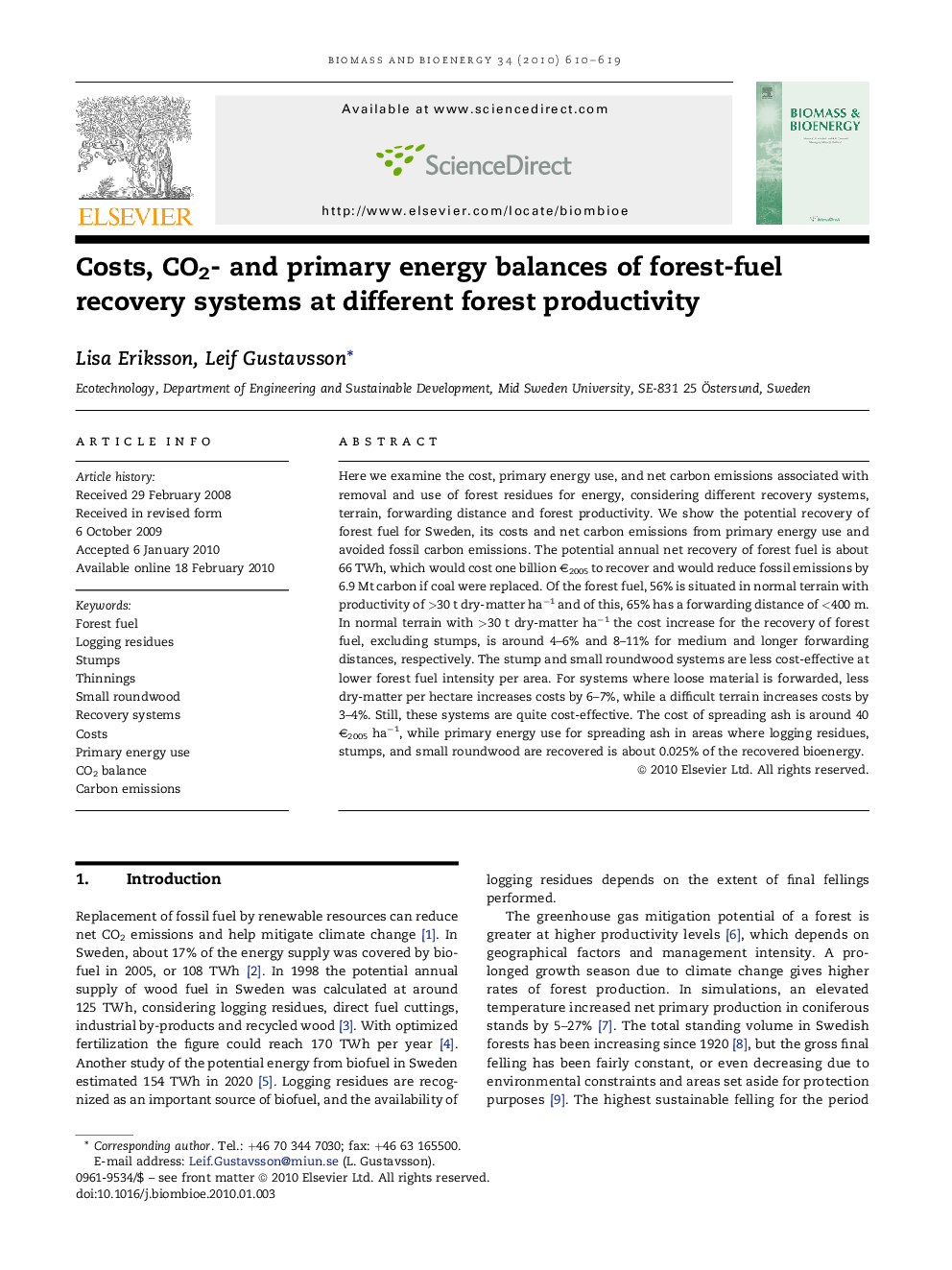| Article ID | Journal | Published Year | Pages | File Type |
|---|---|---|---|---|
| 678341 | Biomass and Bioenergy | 2010 | 10 Pages |
Abstract
Here we examine the cost, primary energy use, and net carbon emissions associated with removal and use of forest residues for energy, considering different recovery systems, terrain, forwarding distance and forest productivity. We show the potential recovery of forest fuel for Sweden, its costs and net carbon emissions from primary energy use and avoided fossil carbon emissions. The potential annual net recovery of forest fuel is about 66 TWh, which would cost one billion â¬2005 to recover and would reduce fossil emissions by 6.9 Mt carbon if coal were replaced. Of the forest fuel, 56% is situated in normal terrain with productivity of >30 t dry-matter haâ1 and of this, 65% has a forwarding distance of <400 m. In normal terrain with >30 t dry-matter haâ1 the cost increase for the recovery of forest fuel, excluding stumps, is around 4-6% and 8-11% for medium and longer forwarding distances, respectively. The stump and small roundwood systems are less cost-effective at lower forest fuel intensity per area. For systems where loose material is forwarded, less dry-matter per hectare increases costs by 6-7%, while a difficult terrain increases costs by 3-4%. Still, these systems are quite cost-effective. The cost of spreading ash is around 40 â¬2005 haâ1, while primary energy use for spreading ash in areas where logging residues, stumps, and small roundwood are recovered is about 0.025% of the recovered bioenergy.
Related Topics
Physical Sciences and Engineering
Chemical Engineering
Process Chemistry and Technology
Authors
Lisa Eriksson, Leif Gustavsson,
